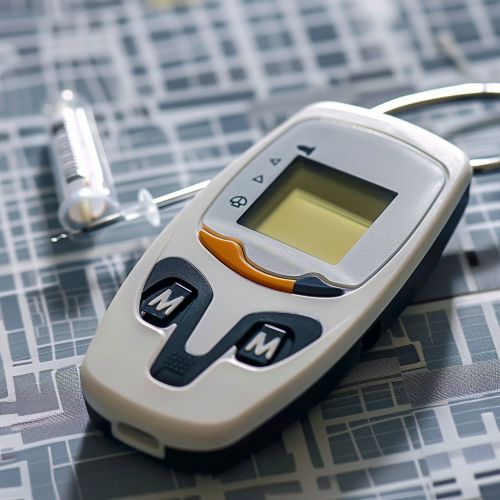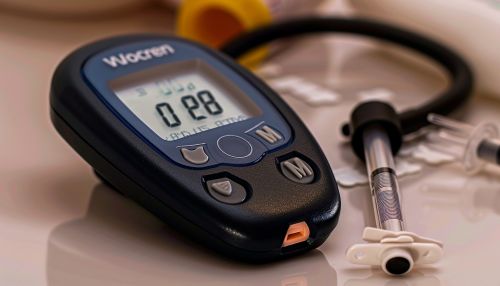Glucose Meter
Overview
A glucose meter is a medical device used to determine the concentration of glucose in the blood. It is primarily used by individuals with diabetes to monitor their blood sugar levels. The device provides instant results, allowing the user to manage their condition effectively.


History
The first glucose meter was developed in 1962 by Ames Laboratories, a division of Miles Laboratories. The device, known as the Ames Reflectance Meter, was large and expensive, limiting its use to hospitals and medical laboratories. Over the years, glucose meters have evolved significantly, becoming smaller, more affordable, and more accurate.
Function
A glucose meter works by analyzing a small sample of blood, usually taken from the fingertip. The blood is applied to a chemically treated, disposable 'test strip' that is then inserted into the meter. The meter reads the chemical reaction between the blood and the test strip to calculate and display the blood glucose level.
Types of Glucose Meters
There are several types of glucose meters available on the market, each with its own features and benefits. Some of the most common types include:
Traditional Glucose Meters
Traditional glucose meters require a blood sample to measure glucose levels. The user pricks their finger with a small, sharp object called a lancet, places a drop of blood on a test strip, and then inserts the strip into the meter.
Continuous Glucose Monitors (CGMs)
Continuous Glucose Monitors are devices that provide real-time glucose readings, typically every few minutes. CGMs require a sensor to be inserted under the skin, which measures glucose levels in the interstitial fluid (the fluid between cells).
Non-Invasive Glucose Meters
Non-invasive glucose meters are a newer development in glucose monitoring technology. These devices use infrared technology to measure blood glucose levels without the need for a blood sample.
Accuracy
The accuracy of glucose meters is a critical factor for people with diabetes, as inaccurate readings can lead to incorrect insulin dosing. Several factors can affect the accuracy of a glucose meter, including user error, environmental conditions, and the quality of the test strips.
Maintenance and Care
Proper maintenance and care of a glucose meter are essential to ensure its accuracy and longevity. This includes regular cleaning, proper storage, and using test strips that are not expired or damaged.
Future Developments
Research and development in glucose monitoring technology continue to evolve, with a focus on improving accuracy, reducing the need for blood samples, and integrating with other technologies such as smartphone apps and wearable devices.
